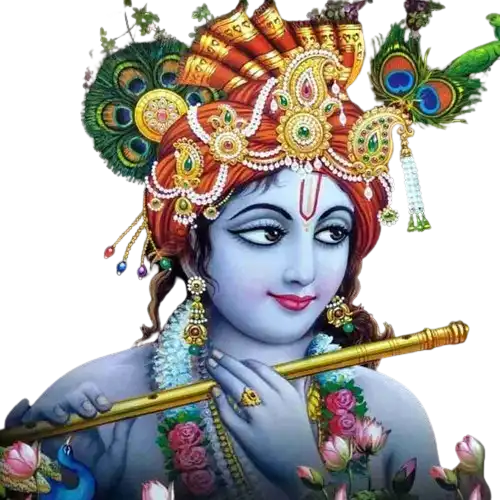1. The Enigmatic Life of Lord Krishna
Krishna's life story is primarily chronicled in texts such as the Mahabharata, the Bhagavata Purana, and the Gita Govinda. Born to Devaki and Vasudeva in a prison in Mathura, to save him from the tyrant King Kamsa, his uncle, he was secretly taken to Gokul and raised by Yashoda and Nanda. His childhood and youth in Vrindavan, filled with miraculous deeds and loving exploits with the gopis (cowherd girls), especially Radha, have captivated the hearts of devotees for centuries.
2. The Bhagavad Gita and Krishna's Teachings
The Bhagavad Gita, a 700-verse Hindu scripture that is part of the epic Mahabharata, captures the essence of Krishna's teachings. As the charioteer and guide to the Pandava prince Arjuna, Krishna imparts spiritual wisdom and guidance on duty, righteousness, devotion, and the ultimate path to salvation. The Gita addresses the moral and philosophical dilemmas faced by Arjuna, offering insights into the nature of reality, the self, and the universe.
3. Krishna's Roles and Symbolism
Krishna is depicted in various forms: as a god-child who performs miraculous feats, a youthful flirt who enchants with his divine play, and a compassionate guide who delivers the message of dharma (righteousness). He is also revered as the eighth avatar of Lord Vishnu, one of Hinduism's principal deities. His symbolism extends beyond religious boundaries, embodying universal themes of love, karma, duty, and the joy of life.
4. Festivals and Celebrations
Janmashtami, the birthday of Lord Krishna, is celebrated with great fervor across India and in many parts of the world. This festival involves fasting, singing, praying, and enacting scenes from Krishna's early life. The festival of Holi, associated with Krishna's playful and loving nature, celebrates the spirit of universal brotherhood and love.
5. FAQs
The flute symbolizes divine music and love, representing Krishna's ability to spread divine joy and call devotees to follow the path of spiritual wisdom and bliss.
Krishna is commonly depicted as a young boy with blue skin, wearing a peacock feather in his hair and playing the flute. His representations in art and literature capture his divine playfulness and profound wisdom.
Yes, the philosophical and moral principles outlined in the Bhagavad Gita offer timeless guidance on living a life of virtue, facing challenges with courage, and achieving spiritual growth.
Radha is considered the supreme goddess and the eternal consort of Krishna in many traditions. Their relationship symbolizes the ultimate union of the individual soul with the Supreme Being.
6. Online Resources
-
The Bhagavad Gita: Access translations and commentaries of the Bhagavad Gita to explore the depth of Krishna's teachings.
-
Virtual Tours of Krishna Temples: Experience the beauty and serenity of Krishna temples through virtual tours available online.
-
Janmashtami Celebrations: Websites and social media platforms offer live streams and videos of Janmashtami celebrations from around the world.
-
Academic Articles and Lectures: Numerous educational resources provide in-depth analyses of Krishna's life, his role in Indian culture, and the philosophical aspects of his teachings.
7. Conclusion
Lord Krishna remains a pivotal figure in the spiritual and cultural tapestry of India and beyond, embodying the highest forms of love and wisdom. His teachings in the Bhagavad Gita continue to inspire and guide millions in their quest for truth and enlightenment. Through his divine play and profound messages, Krishna captures the essence of life's beauty and the path to ultimate liberation.

